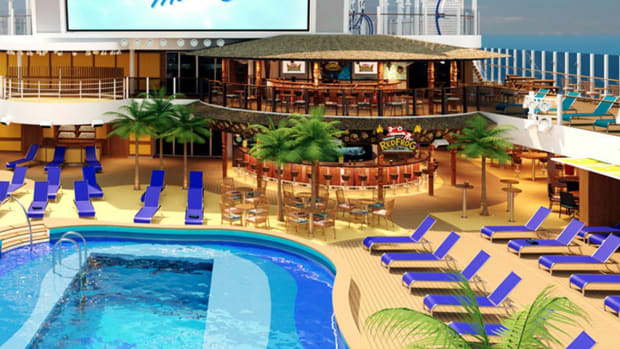Masks have become optional on cruise ships and the Centers for Disease Control (CDC) has dropped its warning about taking cruises. That has returned operations for Norwegian Cruise Lines (NCLH) and Royal Caribbean (RCL) to near normal.
Yes, there are some pre-cruise protocols still in place -- you need to prove vaccination and produce a negative Covid test taken no more than two days before your cruise -- but once you board, the actual cruise feels like it did back in 2019.
That's a welcome change for Norwegian and Royal Caribbean. Both companies returned to sailing in July 2021, but it was with heavily-reduced capacities, social distancing, and masks onboard, The cruise industry had returned, but it was different and that kept casual customers at home limiting the potential audience for the two biggest U.S. cruise lines.
Now, however, both companies have reported signs that a full return to normal should happen in the second half of 2022. That's great news for shareholders and a mixed blessing for potential passengers who will pay more but will also get the full cruise experience in exchange for their money.

Image source: Carnival Cruise Line
Prices are Going Up for Norwegian and Royal Caribbean
When cruises returned in July 2021, demand was limited. Hardcore cruise fans were willing to put up with anything to get back to sea, but more casual customers were not willing to pay full price for a vacation that had restrictions.
It wasn't just masks and Covid rules. Some ports weren't welcoming cruise ships and itinerary changes had become normal rather than exceptional. That kept a lot of potential customers from booking a cruise but that appears to have changed.
"The back half of '22, in spite of delta and omicron, is in line with the record year of 2019, and 2023 is meaningfully ahead both in price and in load factor. So we believe that -- if you believe that the omicron is the last major surge that's going to cause upheaval in everyday life, then that healing period that I referred to has begun," said Norwegian Cruise Line CEO Frank Del Rio during his company's fourth-quarter earnings call.
Del Rio sees normal passenger counts in the second half of the year but at higher prices.
"From a cumulative booking standpoint, our book load factors for sailings in the second half of this year remain within historical ranges at higher prices, both with and without the impact of FCCs [future cruise credits," he added.
Carnival CFO David Bernstein said that his company held the line on prices which will help it in the coming months during his company's first-quarter earnings call.
"Our revenue management teams held on price when we experienced an impact on bookings for near-term sailings, optimizing our longer-term prospects for future revenue and pricing," he said. "Once again, our onboard and other revenue per diems were up significantly in the first quarter 2022 versus the first quarter 2019, in part due to the bundled packages as well as onboard credits utilized by guests from cruises canceled during the pause. We had great growth in onboard and other per diems on both sides of the Atlantic. Increases in bar, casino, shops, spa, and Internet."
Royal Caribbean Sees Higher Prices Ahead
Royal Caribbean CFO Naftali Holtz sees higher prices as well as normal crowds in the second half of 2022, according to his comments during his company's fourth-quarter earnings call.
"From a cumulative booking standpoint, our book load factors for sailings in the second half of this year remain within historical ranges at higher prices, both with and without the impact of FCCs," he said.
Future cruise credits were awarded to customers who had cruises canceled during the pandemic. In many cases, people got 125% of what they had spent (which makes it easier to book a new cruise at slightly higher prices.
The challenge for the industry will be whether booking levels hold once customers exhaust those credits.
Royal Caribbean CEO Jason Liberty sees the FCC program as a positive in getting customers to return to normal patterns.
"I think that most of the FCC application, or what we call our lift and shift program, and then the balance of that would be the FCCs in which they have the 25% value to them. And I think that that program, in general, has been working relatively well" he said. "And for the most part, our guests, they want to go on their vacations. They want to typically go around the same time that they were planning on going, and they're just lifting and they're shifting that to periods of time that -- in the same zone of when they were planning on vacationing before, just a year later or a quarter later."







